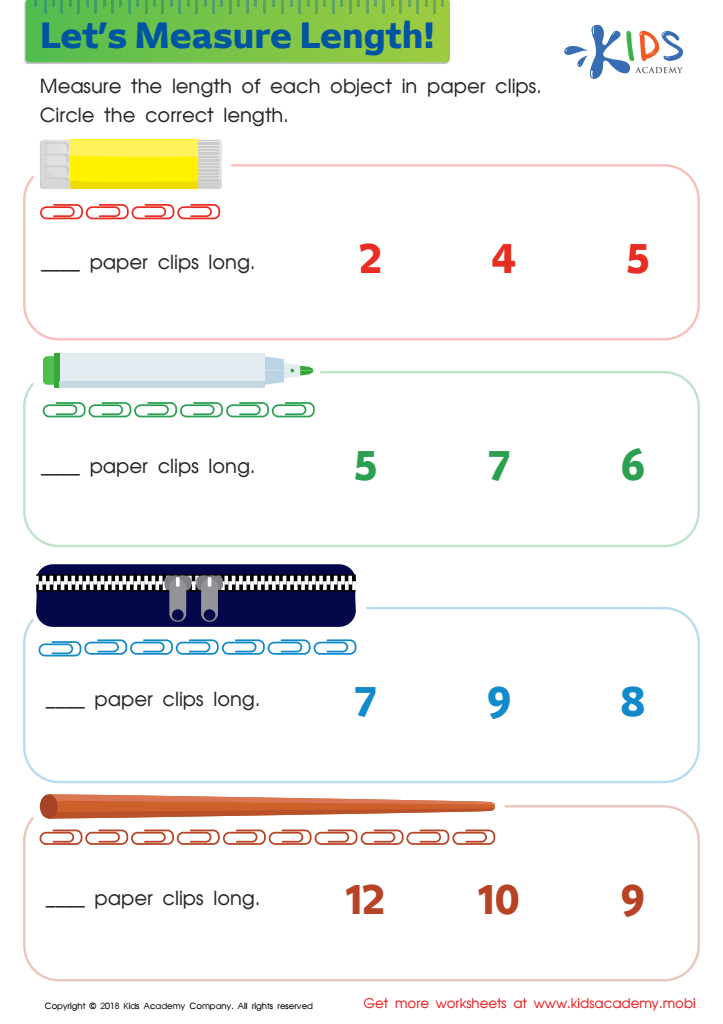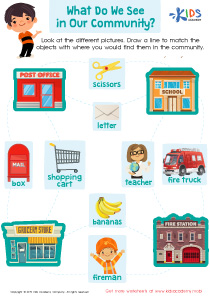Comparing lengths Extra Challenge Measurement Worksheets for Ages 4-7
5 filtered results
-
From - To
Explore our "Comparing Lengths Extra Challenge Measurement Worksheets" designed for children ages 4-7 to develop essential math skills! These engaging, printable worksheets offer fun and interactive activities that help young learners master the concept of measuring and comparing different lengths. Perfect for early childhood education, each worksheet provides a variety of exercises that challenge students in a stimulating and educational way. Great for in-class use or at-home practice, these worksheets support parents and teachers in nurturing mathematical growth and confidence in every child. Checkout how measurement can be exciting and beneficial for your young one’s learning journey!


Learning about measuring objects in inches, feet and yards Worksheet


Lets Measure Length Worksheet


Length Word Problems Worksheet


Ordering by Length Worksheet


Learning measuring objects in inches Worksheet
Measuring and comparing lengths are fundamental skills in the early development of children, especially those aged 4-7. Engaging in length comparison challenges helps young learners develop crucial cognitive skills. Firstly, these activities enhance their understanding of size, scale, and spatial relationships, which are foundational components of mathematical thinking.
By comparing lengths, children learn to use descriptive language like "longer," "shorter," "taller," and "equal," which expands their vocabulary and communication skills. This early practice with measurement concepts sets the stage for more complex math skills, such as addition, subtraction, and problem-solving.
Furthermore, length comparison exercises help build fine motor skills, as children often manipulate objects to compare them. These activities also introduce reasoning and critical thinking, allowing children to make observations, predictions, and conclusions based on evidence they gather.
Incorporating these measurement challenges into daily routines can make learning interactive and fun, fostering a love for exploring the world through math. In an age where STEM (Science, Technology, Engineering, and Mathematics) education is becoming increasingly pivotal, giving children a strong foundation in these basic concepts will support their future academic and everyday life success. Therefore, parents and teachers should integrate length comparison activities to aid holistic development.
 Assign to My Students
Assign to My Students
















